The Center for Spain in America (CSA) promotes advanced study and public awareness in the United States of Spanish art and visual culture, also focusing on the history of the Spanish presence and the influence of Spanish art and culture on North America. CSA cooperates with universities, libraries, archives, museums and other educational or cultural institutions fostering academic excellence in the field of Spanish studies in the United States of America and supporting activities such as symposia, lecture series, exhibitions and publications.
The Center for Spain in America is registered as a not-for-profit organisation in the United States and is legally incorporated in New York State since 2009. Its activity is made possible, in part, by CEEH.
-
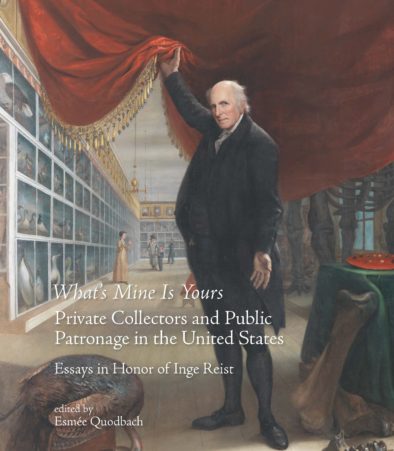 April 2021Book releaseWhat’s Mine Is Yours. Private Collectors and Public Patronage in the United States. Essays in Honor of Inge Reist
April 2021Book releaseWhat’s Mine Is Yours. Private Collectors and Public Patronage in the United States. Essays in Honor of Inge ReistThis publication is devoted to private collectors and their relationships with and gifts to public institutions in the United States. Thirteen authors bring to life the long tradition of private collecting and public philanthropy in America and reveal new insights into the formation of many of its major art institutions. Public-spirited collectors such as Henry Clay Frick, Andrew Mellon, and Solomon and Irene Guggenheim fulfilled their desires by establishing The Frick Collection, the National Gallery of Art, and the Guggenheim Museum, respectively. John G. Johnson’s collection was first left to Philadelphia as a standalone museum, and later fell under the stewardship of the Philadelphia Museum of Art. Eleanor and Edsel Ford were instrumental supporters and contributors to the Detroit Institute of Arts. Samuel Putnam Avery was a civic-minded art dealer, adviser, and collector whose porcelain collection helped shape the Department of Asian Art at The Metropolitan Museum of Art in New York. Some collectors, including Catharine Lorillard Wolfe, Michael Friedsam, Adelaide de Groot, and Martin A. Ryerson, made significant gifts to pre-existing museums such as The Met and the Art Institute of Chicago. Finally, Robert Gilmor, Jr., and arguably Mary Jane Morgan, had aspirations of building public collections, yet they were not successful for various reasons. “What’s Mine is Yours” celebrates Inge Reist, founding Director and now Director Emerita of the Center for the History of Collecting at the Frick Art Reference Library.
-
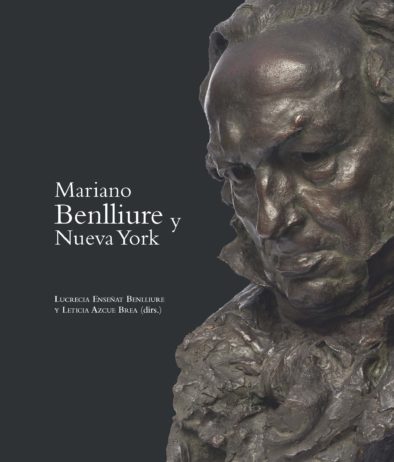 January 2021Book releaseMariano Benlliure y Nueva York
January 2021Book releaseMariano Benlliure y Nueva YorkThe new book from the CEEH and the CSA is devoted to the oeuvre of sculptor Mariano Benlliure (1862−1947) in the United States. These works are mainly preserved in New York in the collection of the Hispanic Society of America, which has collaborated on publishing this volume.
Benlliure’s first New York clients were the magnate, collector and patron Henry G. Marquand, the second president of the Metropolitan Museum, who commissioned his first piece from Benlliure in 1883, and Samuel Ward, another distinguished art lover and influential member of American society who asked him for a sculpted portrait bust around the same time. His principal benefactor during the first third of the 1900s was, however, Archer M. Huntington, the founder of the Hispanic Society of America, who entrusted him with an important series of portraits of the leading figures on the Spanish cultural scene of the day, as well as purchasing other works for the institution. Nevertheless, Benlliure’s most ambitious sculpture would be the monument to congressman William A. Jones for the city of Warsaw in Virginia.
Six renowned specialists (L. Enseñat Benlliure, L. Azcue Brea, C. del Álamo, C. Domenech, J. Gimeno y B. Pons-Sorolla) address the subject from their respective fields: the role of the Hispanic Society on the New York culture scene during those years; figurative sculpture in Spain, including the presence of the most prominent Spanish sculptors in Latin America; the medal exhibition in New York in 1910 that marked the start of the relationship between the sculptor and the Hispanist, whose links with sculpture are analysed through his second wife the sculptor Anna Hyatt, who encouraged his contact with Benlliure; the strong ties between Benlliure and Sorolla, two of the artists who are best represented in the Hispanic Society’s collection; and the critical fortunes of the Valencian sculptor in the United States.
The second part of the book provides an exhaustive and systematic analysis of each of the works Benlliure produced for the United States, contextualising them through documents, letters, photographs and articles published in the press, many of which are brought to light for the first time here. The task of studying and cataloguing the works was carried out by the editors of the volumen Lucrecia Enseñat Benlliure, (great-granddaughter of Mariano Benlliure, is an architect and independent researcher) and Leticia Azcue Brea (chief curator of Sculpture and Decorative Arts at the Museo Nacional del Prado).
-
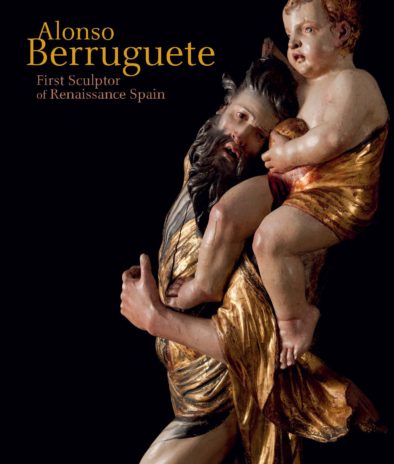 October 2019Exhibition catalogueAlonso Berruguete: First Sculptor of Renaissance Spain
October 2019Exhibition catalogueAlonso Berruguete: First Sculptor of Renaissance SpainAlonso Berruguete (c. 1488–1561) revolutionized the arts of Renaissance Spain with a dramatic style of sculpture that reflected the decade or more he had spent in Italy while young. Trained as a painter, he traveled to Italy around 1506, where he interacted with Michelangelo and other leading artists. In 1518, he returned to Spain and was appointed court painter to the new king, Charles I. Eventually, he made his way to Valladolid, where he shifted his focus to sculpture, opening a large workshop that produced breathtaking multistory altarpieces (retablos) decorated with sculptures in painted wood.
This handsomely illustrated catalogue is the first in English to treat Berruguete’s art and career comprehensively. It follows his activity from his beginnings in Castile to his final years in Toledo, where he produced his last great work, the marble tomb of Cardinal Juan de Tavera. Enriching the chronological narrative are discussions of important aspects of Berruguete’s life and practice: his complicated relationship with social status and wealth; his activity as a draftsman and use of prints; how he worked with his many assistants to create his wood sculptures; and his legacy as an artist.
-
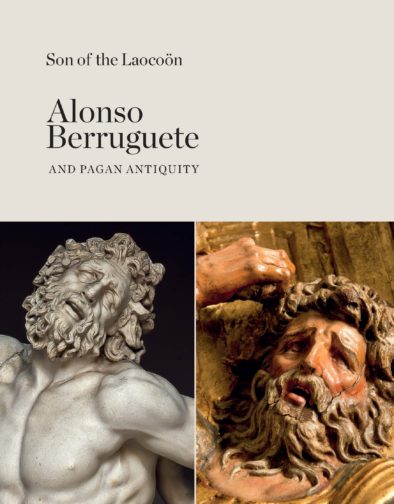 July 2018Book releaseSon of the Laocoön. Alonso Berruguete and Pagan Antiquity
July 2018Book releaseSon of the Laocoön. Alonso Berruguete and Pagan AntiquityAlonso Berruguete (c. 1489–1561), the first Spanish Renaissance sculptor, spent a fruitful stint in Italy, where he came into contact with Michelangelo, Raphael, and Bramante and was influenced by their enthusiasm for ancient ideals and their attitude to art. Sarcophaguses, ruins and statues fired his imagination, especially the Laocoön: its theatrical pathos, anatomical virtuosity, and bodies dancing in space left an indelible mark on his oeuvre.
Upon his return to Castile he felt himself to be a Renaissance man, a “new” artist willing to defy the old authorities and defend his ingenium. Drawing on this heritage, he produced works steeped in emotion and visual vehemence that reveal an obsessive preference for the sombre and “nocturnal” brand of Renaissance art: Dionysian as opposed to Apollonian brand, characterised by tormented and exaggerated gestures, expressive frenzy and the terribilità suffered by “Laocoön’s sons.” For Berruguete’s pulsating modernity stems from his anticlassical classicism, the importance he attaches to freedom of rhythm and anguish, and an extreme subjectivity that combines the force of the ancient with the freshness of the modern.
The first section of the catalogue examines contextual issues, such as the approach to Antiquity found in sixteenth-century Italian art; archaeological scholarship and the development of sculpture in the Rome Berruguete experienced; the collecting of antiquities in Renaissance Spain; and the state of knowledge of the classical world in 1500s Spain. The second section focuses on the mark left by Laocoön on Berruguete’s sculpture, the influence of sarcophaguses in his representations of the Passion, his repertoire of gestures and expressive devices borrowed from Antiquity, and his aspect as an architect and status of modern creator whose idea of art is based on the primacy of drawing.
-
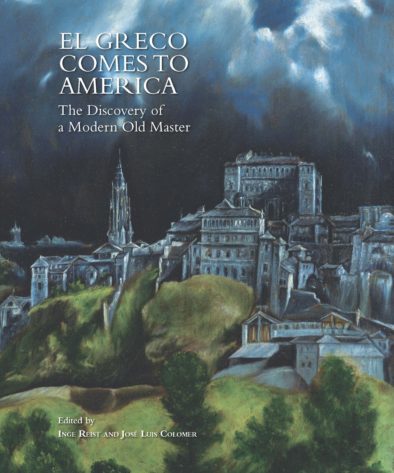 November 2017Book releaseEl Greco Comes to America. The Discovery of a Modern Old Master
November 2017Book releaseEl Greco Comes to America. The Discovery of a Modern Old MasterThis book celebrates the superlative examples of El Greco’s work in American collections. The artist’s idiosyncratic style emanated a kind of modernism that resonated with collectors in the New World, resulting in American museums owning many of El Greco’s finest works outside Spain. Eleven scholars address topics that focus on individual collectors including Arabella Huntington, Louisine Havemeyer, Henry Clay Frick, Peter Widener, and Duncan Phillips, while also addressing the impact of exhibitions and the role of artist-advisers such as Mary Cassatt, John Singer Sargent, and Roger Fry.
Basing their observations on a wealth of archival material, much of it never previously published, the authors of this volume bring to light how strenuously American collectors competed for works by El Greco and how prominently they displayed the artist’s paintings in their homes, often thoughtfully positioned near works by more modern masters such as Degas or Manet. In doing so, and in promoting the acquisition of El Greco’s paintings by the public institutions these collectors supported, they burnished the international reputation of the artist for a modern audience, ensuring an appreciation of his unique style into the twenty-first century.
-
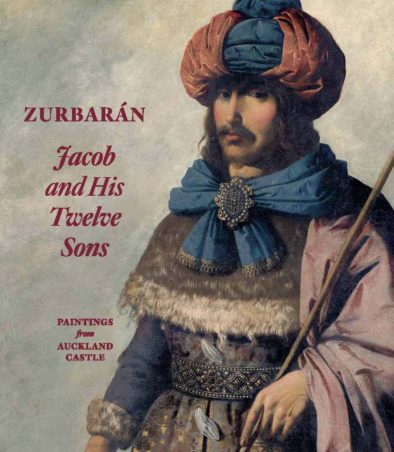 September 2017Exhibition catalogueZurbarán. Jacob and His Twelve Sons. Paintings from Auckland Castle
September 2017Exhibition catalogueZurbarán. Jacob and His Twelve Sons. Paintings from Auckland CastleFrancisco de Zurbarán (1598‒1664) spent most of his artistic career in Seville, where he produced a series of thirteen life-sized characters from Genesis: Jacob and His Twelve Sons. Although it may have been a commission for the Americas, the series was auctioned in England in the mid-eighteenth century in the sale of a Jewish merchant called Benjamin Mandez. Richard Trevor, the bishop of Durham, bought twelve of the thirteen pictures and commissioned a copy of Benjamin (now in the collection of Lord Willoughby of Eresby’s descendants). He hung the series in Auckland Castle to assert the need for tolerance and social, political and religious understanding between Christians and Jews in Britain.
In this catalogue, which accompanies the exhibition held in Dallas, New York and Jerusalem various specialists analyse the series from a historical, religious, artistic and technical viewpoint, offering substantial new findings on the iconography of the twelve tribes of Israel and on Zurbarán’s visual sources and artistic practices. The result is the most exhaustive scholarly contribution to date on one of the master’s most ambitious series.
-
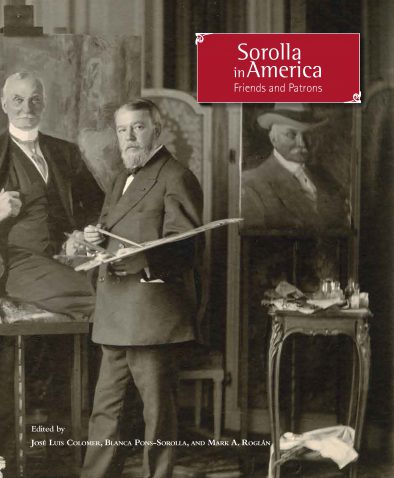 May 2015Book releaseSorolla in America: Friends and Patronsby José Luis Colomer, Blanca Pons-Sorolla and Mark A. Roglán (eds.)
May 2015Book releaseSorolla in America: Friends and Patronsby José Luis Colomer, Blanca Pons-Sorolla and Mark A. Roglán (eds.)
Meadows Museum with the CSA and Fundación Museo Sorolla with the collaboration of CEEHJoaquín Sorolla y Bastida (1863–1923) enjoyed widespread fame in America’s Gilded Age, when museums contended to host his solo exhibitions in 1909 and 1911, and the purchase of his paintings was a matter of pride for public and private collections. This volume studies the web of personal relationships that underlay this collective fascination for Sorolla, the most admired Spanish artist outside Spain in the early twentieth century.
-
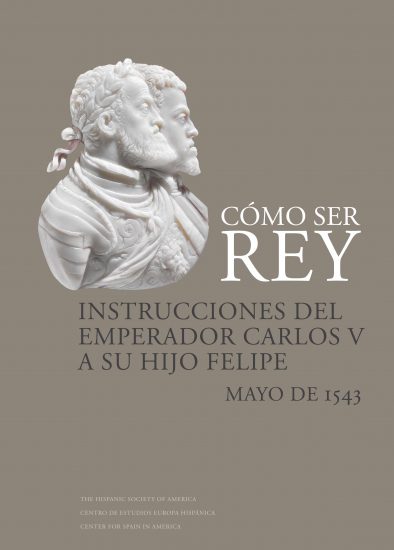 September 2014Book releaseCómo ser rey. Instrucciones del emperador Carlos V a su hijo Felipe. Mayo de 1543by Rachael Ball and Geoffrey Parker (eds.)
September 2014Book releaseCómo ser rey. Instrucciones del emperador Carlos V a su hijo Felipe. Mayo de 1543by Rachael Ball and Geoffrey Parker (eds.)
CSA and The Hispanic Society of AmericaIn 1872, the eminent Belgian historian Louis-Prosper Gachard praised the secret Instructions written in Palamos on 4 and 6 May 1543 by Emperor Charles V for his son, the future Philip II, as “monuments of wisdom and foresight, born of a mature experience in the art of government, and a profound knowledge of men and affairs. These alone suffice to place Charles V in the first rank of the statesmen of his day.”
-
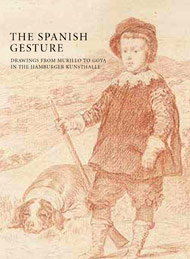 April 2014Exhibition catalogueThe Spanish Gesture. Drawings from Murillo to Goya in the Hamburger Kunsthalleby Jens Hoffmann-Samland and others
April 2014Exhibition catalogueThe Spanish Gesture. Drawings from Murillo to Goya in the Hamburger Kunsthalleby Jens Hoffmann-Samland and others
Meadows Museum, CSA and CEEHThis catalogue is the first to feature the entire collection of Spanish drawings of the Hamburger Kunsthalle. Some of these works were already known on account of their outstanding importance and had been exhibited on several occasions; a thorough study had yet to be conducted of the collection, its history and problems of attribution.
The holdings of this German museum feature works by the foremost Spanish masters of the sixteenth to the eighteenth centuries, from Juan de Juanes to Francisco de Goya, including the greatest artists of the Golden Age, among them Carducho, Francisco de Herrera the Elder, Alonso Cano, Antonio del Castillo and Murillo.
The English version of the book is accompanying the exhibition of a selection of pieces at the Meadows Museum in Dallas (May–August 2014); the Spanish version has been produced for the second venue of this exhibition, the Museo Nacional del Prado (September 2014–January 2015).
The CEEH and the CSA have collaborated on the publication of the catalogue in both cases.
-
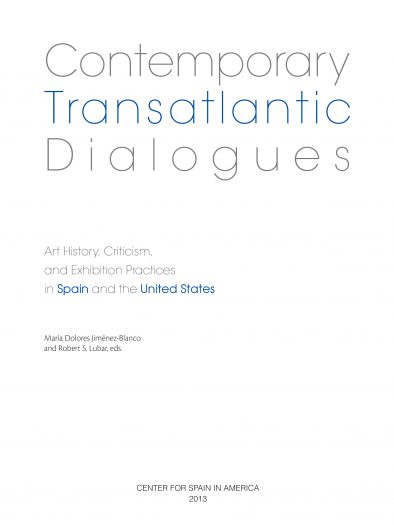 December 2013Online publicationContemporary Transatlantic DialoguesEd. by Robert S. Lubar and María Dolores Jiménez-Blanco
December 2013Online publicationContemporary Transatlantic DialoguesEd. by Robert S. Lubar and María Dolores Jiménez-Blanco
CSA in association with The Institute of Fine Arts of New York UniversityOn April 1st and 2nd 2011, the Institute of Fine Arts of New York University hosted the symposium Contemporary Transatlantic Dialogues, organized by the Center for Spain in America. This volume gathers the dialogues and lectures presented at this event, which brought together art historians, art critics, artists, curators and museum professionals from Spain and the United States.
After four decades of dictatorship and during the transition to democracy that followed upon the death of Francisco Franco in 1975, Spain inaugurated a new phase in its political and cultural history. Sporadic and politically motivated contacts between Spanish and North American artists, critics and curators in the 1950s have progressed into an open exchange of ideas and collaborative projects in recent decades. This book focuses on key issues and experiences that have shaped the cultural dialogue between the two countries over the past 50 years.
-
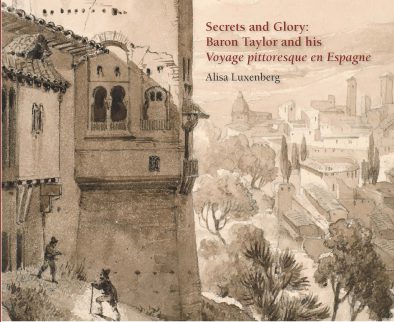 February 2013Book releaseSecrets and Glory. Baron Taylor and his Voyage Pittoresque en Espagneby Alisa Luxenberg
February 2013Book releaseSecrets and Glory. Baron Taylor and his Voyage Pittoresque en Espagneby Alisa Luxenberg
CEEH in association with the CSA and The Hispanic Society of AmericaIn the first full critical study of Voyage pittoresque en Espagne by Baron Taylor (1789-1879), Luxenberg examines both the long gestation of the book and the multiple facets of its author’s career, discovering unknown aspects of Taylor’s life. Relying on copious archival sources, this research reveals the close links between Taylor’s travels in the Iberian Peninsula, the Voyage pittoresque en Espagne and the group of paintings that King Louis Philippe exhibited in the Spanish Gallery at the Louvre between 1838 and 1848. Luxenberg also questions whether there was a single authorship of the Voyage pittoresque, analysing its engravings in parallel with the unpublished series of drawings which served as their basis.
-
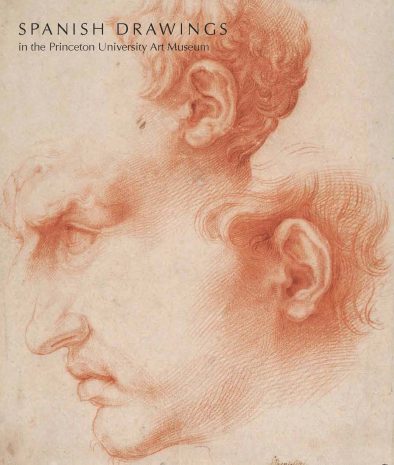 December 2012Book releaseSpanish Drawings in the Princeton University Art Museumby Lisa A. Banner
December 2012Book releaseSpanish Drawings in the Princeton University Art Museumby Lisa A. Banner
Published by Princeton University Art Museum and distributed by Yale University Press
With major support from CSAThe Princeton University Art Museum’s collection of Spanish drawings includes masterworks by artists such as Ribera, Murillo, Goya, Picasso, and Dalí. Although many of these drawings relate to celebrated paintings, commissions, and other works by these artists, they remain largely unknown. Most have not been published previously and many are attributed here for the first time.
In this volume preeminent scholars enrich the growing corpus of work on Spanish drawings with original research. Each of the eighty-six drawings is reproduced in color, often accompanied by comparative illustrations. Watermarks have been documented with beta radiography and are included in an appendix. Provenances and artist biographies round out this detailed record of one of the most important collections of its kind.
The research project and its publication have been underwritten the Center for Spain in America.
-
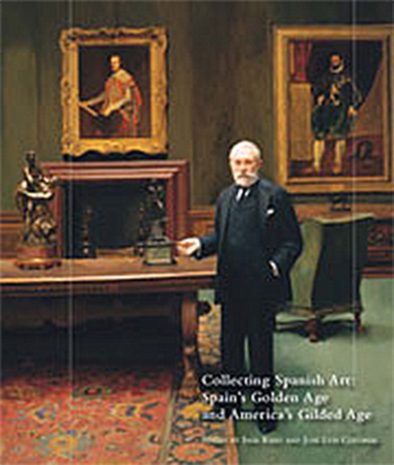 November 2012Book releaseCollecting Spanish Art: Spain’s Golden Age and America’s Gilded Ageby Inge Reist and José Luis Colomer (eds.)
November 2012Book releaseCollecting Spanish Art: Spain’s Golden Age and America’s Gilded Ageby Inge Reist and José Luis Colomer (eds.)
Jointly published by The Frick Collection, Center for Spain in America and CEEHThis book explores why and how some of America’s greatest art collectors, including Isabella Stewart Gardner, Henry Clay Frick, Charles Deering, Archer Huntington, William Randolph Hearst, and Algur Meadows turned to the art of Spain to expand and enrich their collections. The authors examine in lively detail the formation of the taste for Spanish art that grew from travel and visits to world fairs as well as the roles played by contemporary artists, dealers and advisors who were so influential in importing Spanish works of art to the United States to fuel the growth of so many private and later public American collections.
-
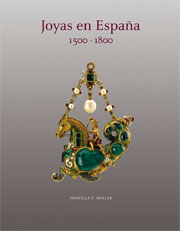 May 2012Book releaseJewels in Spain 1500-1800by Priscilla E. Muller
May 2012Book releaseJewels in Spain 1500-1800by Priscilla E. Muller
The Hispanic Society of America, Center for Spain in America and CEEHCSA y CEEH jointly publish with The Hispanic Society of America a painstaking update of the classic book written by Priscilla E. Muller in 1972, which has become a bibliographical rarity for collectors and experts. In collaboration with the author Ediciones El Viso has undertaken a full revision of the text, now illustrated with new images in full colour and released in two versions, Spanish and English.
